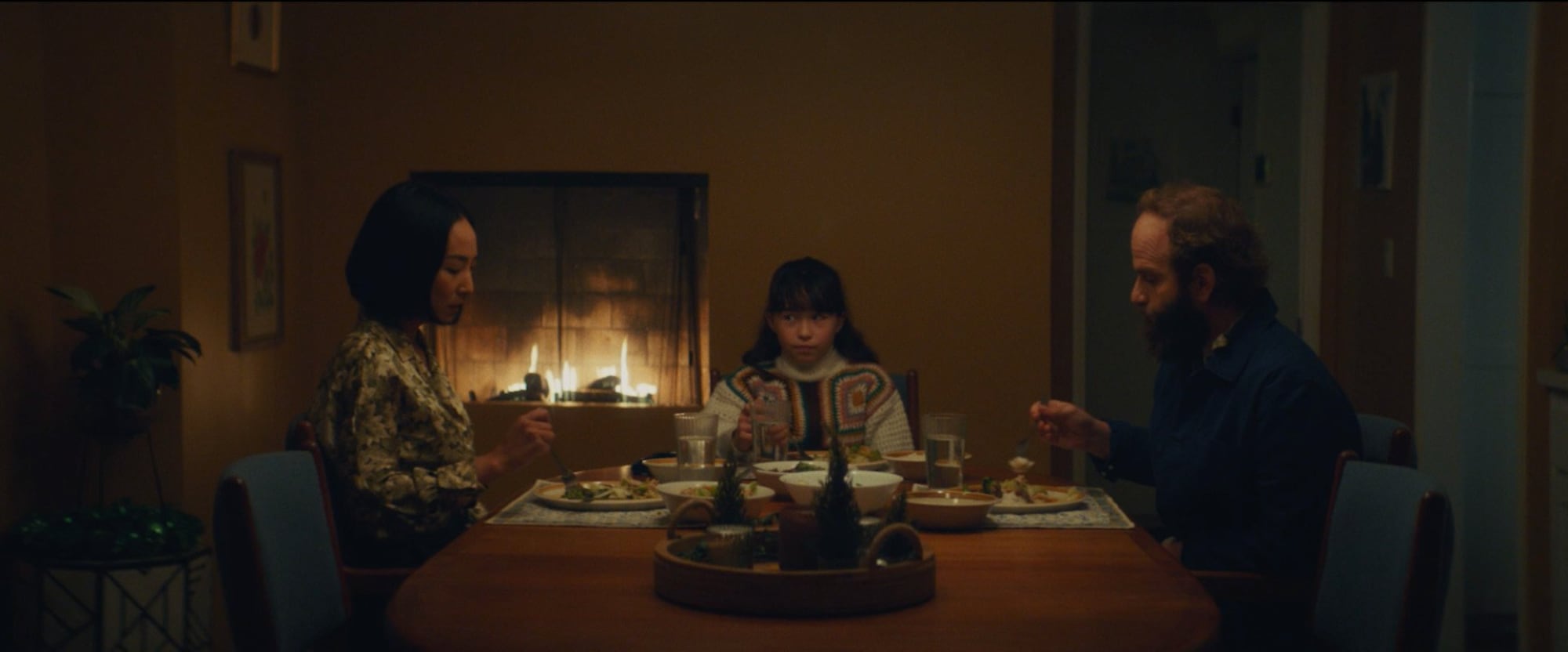
Therapy is heralded by millions as a way to work through the tangle of our innermost feelings and air grievances without judgement, making it a bountiful foundation for Daniel Sinclair’s tonal mash-up The Breakthrough. Greta Lee and Ben Sinclair play a fractured couple who are the embodiment of an unbalanced modern day relationship, but with Sinclair deftly flipping expected gender roles, placing the male partner in the role of domesticity suffocating his creativity whilst his female counterpart, earning all of the money, continues to come home late from work. The Breakthrough is set over Christmas, a supposed time of time of goodwill and joy but here serves as a shining reminder of the couple’s simmering distaste for one another. The Breakthrough is deviously funny and sharp at every turn and also serves as a pertinent reminder of the benefits of composting. Ahead of the film’s online premiere today we spoke to Sinclair about how he ensured his focus remained on the heart of the story, lifting out some choice comedic moments to better serve the film as a whole and counterbalancing cosiness against the calamitous situation of his warring couple find themselves in.
Dare I ask if this story comes from personal experience?
The Breakthrough started out as a joke that I pitched to a writer friend of mine. Without spoiling the twist: what if a troubled married couple took things too far in a therapy session, only to solve their problems by dealing with the fallout of their actions? It was just an idea I had. But as I started to work on it and figure out who Jane and Teddy are and define their marital problems, I inevitably found myself pulling from small details of my own life. Fortunately, I am happily married. My wife Bridget Moloney is also a filmmaker, and she produced this short film. We are not Jane and Teddy, we have never treated each other the way they do, but we do share a life together. There have been challenges to navigate so there is a bit of underlying truth to the problems Jane and Teddy are working through. It felt important to make them and their issues feel relatable before things spiral out of control.
I initially conceived of the project as a feature film and started outlining it that way, but somewhere along the line, I decided to switch gears and reconceptualize it as a short. The story is a tonal mash-up and trying to pull it off as a short felt much more manageable. I wrote the script in 2019 and had my first meeting with producer Kate Chamuris that fall to discuss making it. The pandemic sort of derailed any and all of those initial plans, but it allowed me the time and the focus to concentrate on the visual look and feel of the movie.
The story is a tonal mash-up and trying to pull it off as a short felt much more manageable.
In putting together a lookbook, I found myself inspired by two movies in particular. The first is Paul Thomas Anderson’s Punch-Drunk Love, which has always been a personal favorite. That movie balances a lot of different tones as well, nimbly shifting from comedy to thriller to romance. I even crafted one shot in The Breakthrough as a homage, when Jane and Teddy share a moment of connection and the Christmas lights flicker on behind them. I was trying to evoke a similar emotional moment to Punch-Drunk Love when the lights of the phone booth flicker on right when Adam Sandler finally connects with Emily Watson in Hawaii. Later in post production, Tamara Jenkins’ Private Life was also a huge inspiration for me. I love the way the married couple fights with each other in that movie. Even as they’re arguing, you can tell they really care about each other. It feels very real in that way, and I was eager to recreate that same sort of balance in the way Jane and Teddy relate to each other.
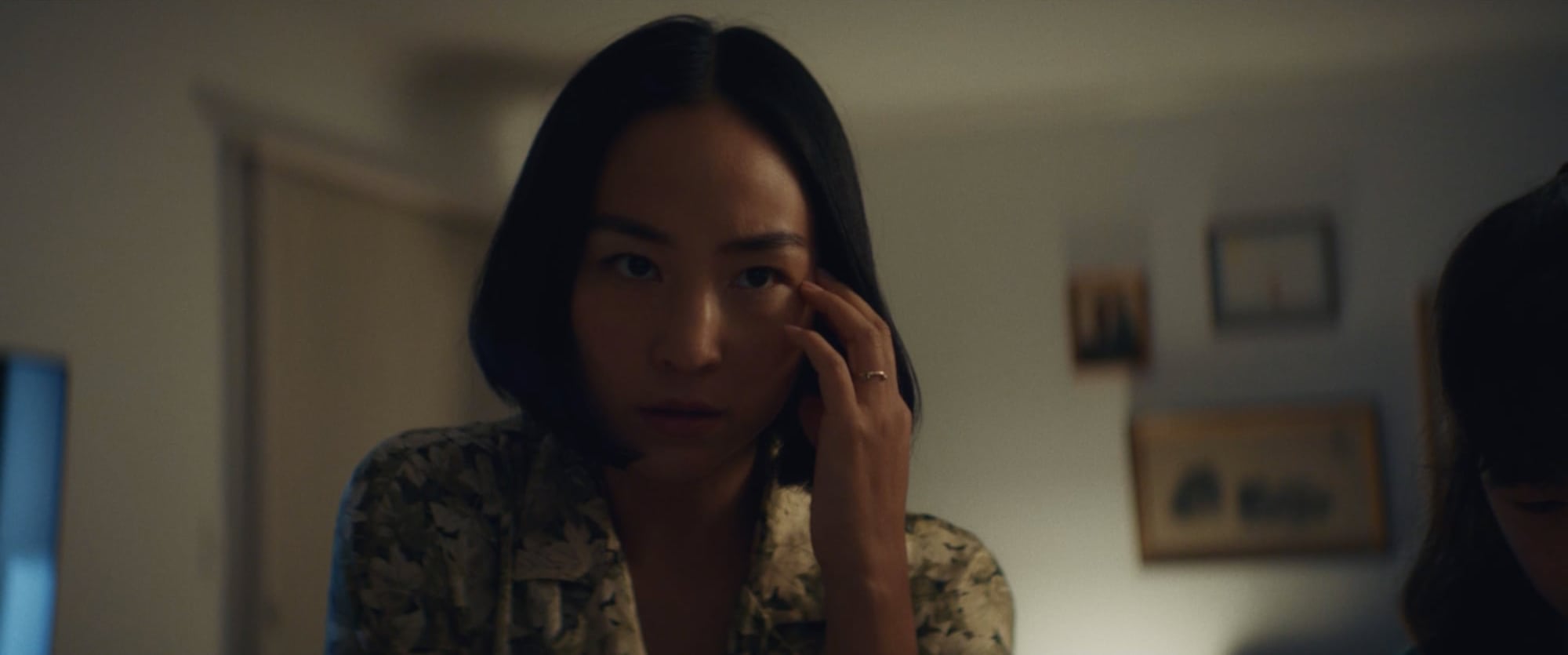
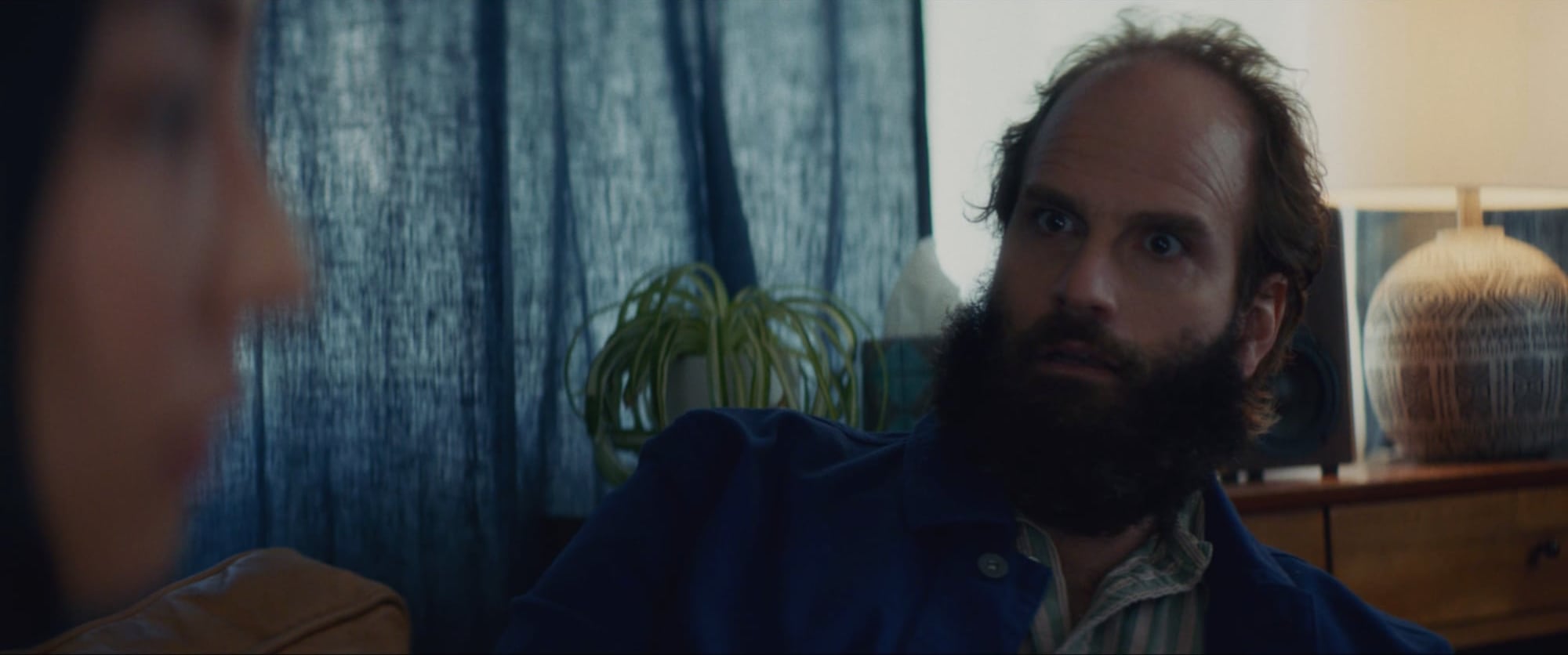
What did you have to pare down from the larger feature script and focus on to make this work as a short?
Telling this story as a short film really helped me really hone in on what this story is at its core. When thinking about a feature film, I have a tendency to try out plot twists and subplots in hopes of complicating the story (in a good way). But honestly, I’m almost always just overcomplicating things. I usually lose track of what really matters, and then it takes me a long time to reorient myself and narrow my focus once again. It’s a horrible process, but it’s mine! The size and scope of a short film limited my ability to get in my own way, I suppose.
Pivoting to telling the story as a short film took away that bad idea and any 2nd Act real estate for all my bad habits.
A good example of this is that very early in the feature outlining process, I had this idea that it would be revealed midway through the film that Jane had been having an affair with the therapist. But that idea was bad. For one, it likely would have seemed totally coincidental after the big first act twist occurs. But even more importantly, making the therapist complicit in a lie like that would have revealed that nothing Teddy and Jane were working on in therapy could have possibly worked. The idea of healing and growing together in any sort of therapeutic process would have been tainted from the start. Pivoting to telling the story as a short film took away that bad idea and any second act real estate for all my bad habits. It forced me to focus on Jane and Teddy and their problems with each other and only each other, which is ultimately what the story should be about.
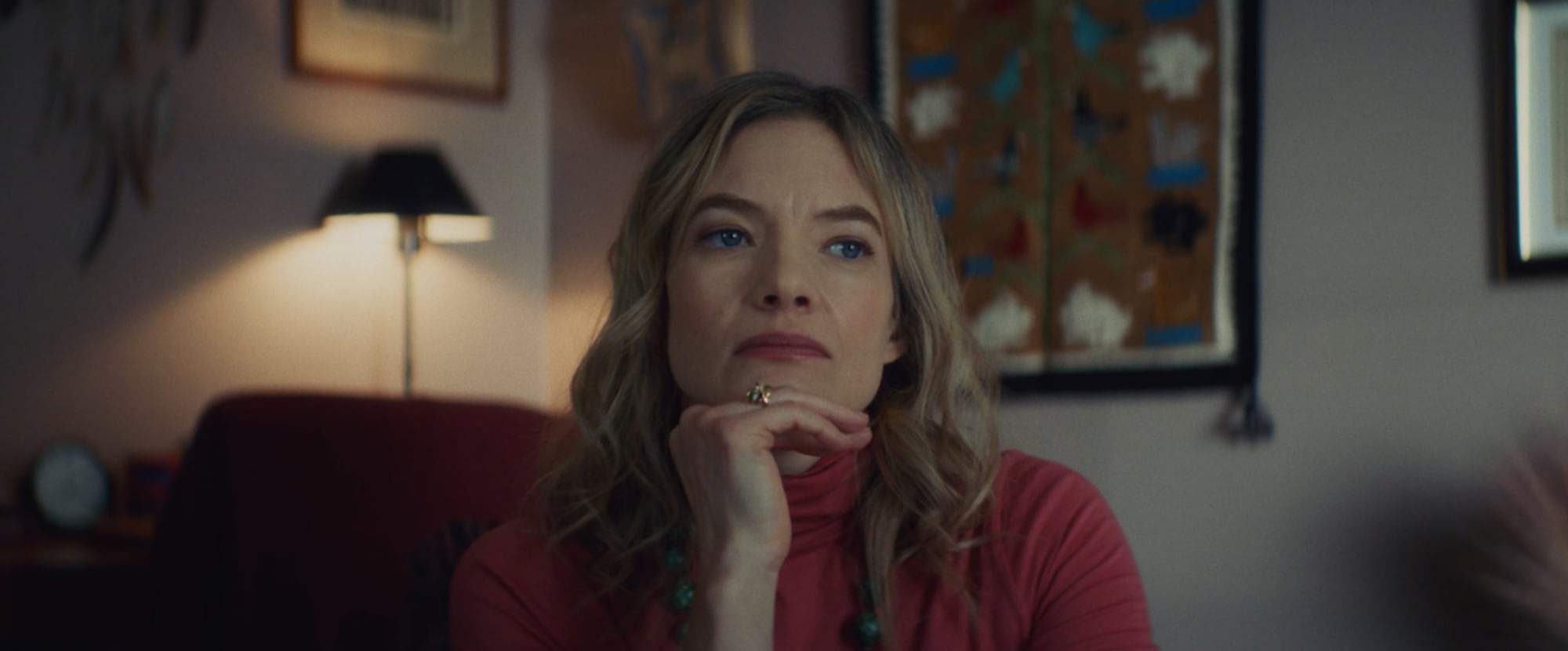
When I got into the edit, I had to lift some very funny stuff out because it felt like we were pressing for laughs.
There are brilliant moments of rom-com, horror, thriller and drama peppered throughout this film. Can you tell us more about creating that tonal mashup and how you them all to flow so seamlessly into each other?
The key to anchoring all these different genre and tonal shifts was keeping the performances as grounded as possible. I remember talking to Kristin Slaysman, Dr. Angelo, during the shoot and saying that I wanted the opening therapy scene to play like a drama. No jokes. Of course, it didn’t play like that at all. There’s some very funny stuff in that opening scene. Greta and Ben are just naturally funny, and they are arguing about a motel detective. But in general, we tried to play every moment as real as possible, even when the situation strained credulity. Greta, Ben, and Kristin are all fantastic actors. They did not chase jokes and just trusted that the moments themselves would be funny. When I got into the edit, I had to lift some very funny stuff out because it felt like we were pressing for laughs. But that grounded realness, even in the face of the ridiculous horror beats, I think ultimately kept everything aligned.

You’ve flipped the typical gender roles beautifully and both of them seem to wholly embody the clichés we often see and expect from a warring couple.
My wife and I have divided up the domestic labor in our household. I do almost all the dishes by choice. I am very particular about how the dishwasher is loaded. So, what is seen on camera does not feel particularly foreign to me. But I realized that subverting the traditional gender roles would make both characters more sympathetic. Teddy is bogged down by the weight of the domestic labor while Jane is busy at work. Because of history and the patriarchy, I think it would have been extremely difficult to sympathize with Teddy if the roles were reversed. Simultaneously, the audience is able to forgive Jane for spending too much time at work because we all know how impossible it is for women to balance a family and a career given the societal expectations that are put upon them.
The tension builds until the point of no return for our couple which unexpectedly brings them closer. How did you manage to bond them in a time where we expect explosions?
The original concept was always for the way the couple dealt with Dr. Angelo would ultimately bring them back together. So, once I arrived at the point of no return, I needed to figure out exactly what had to happen to solve this mess. And after finding those practical solutions, I went back into the early part of the script and layered in the necessary elements that would eventually become part of the equation. It was simply a matter of math. For example, composting was not originally an issue for the couple. It later became one after I realized it was a solution to their larger problem.
Even when the family is having a very uncomfortable dinner in silence at one point, there is a roaring fire in the fireplace behind them that is generating some warmth on screen.
There is a glow and comfort around the whole film even as they have to cover their heinous act. What tones and look were you drawn to in order to keep that family drama aesthetic?
Perhaps the fact that this entire film was shot entirely in my home has something to do with this inherent comfort. It was the week before Christmas, so there were decorations on display, reindeer ears and a Rudolph nose on our minivan, and we just decided to roll with it. It was also a very cold and rainy week in Los Angeles. We lost heat at our house at one point. The cast and crew, we all had to hunker down together during this shoot to stay warm. So, it felt particularly cozy to me! I’m not sure the audience can feel it watching the film, but I sure can because I remember it so well.
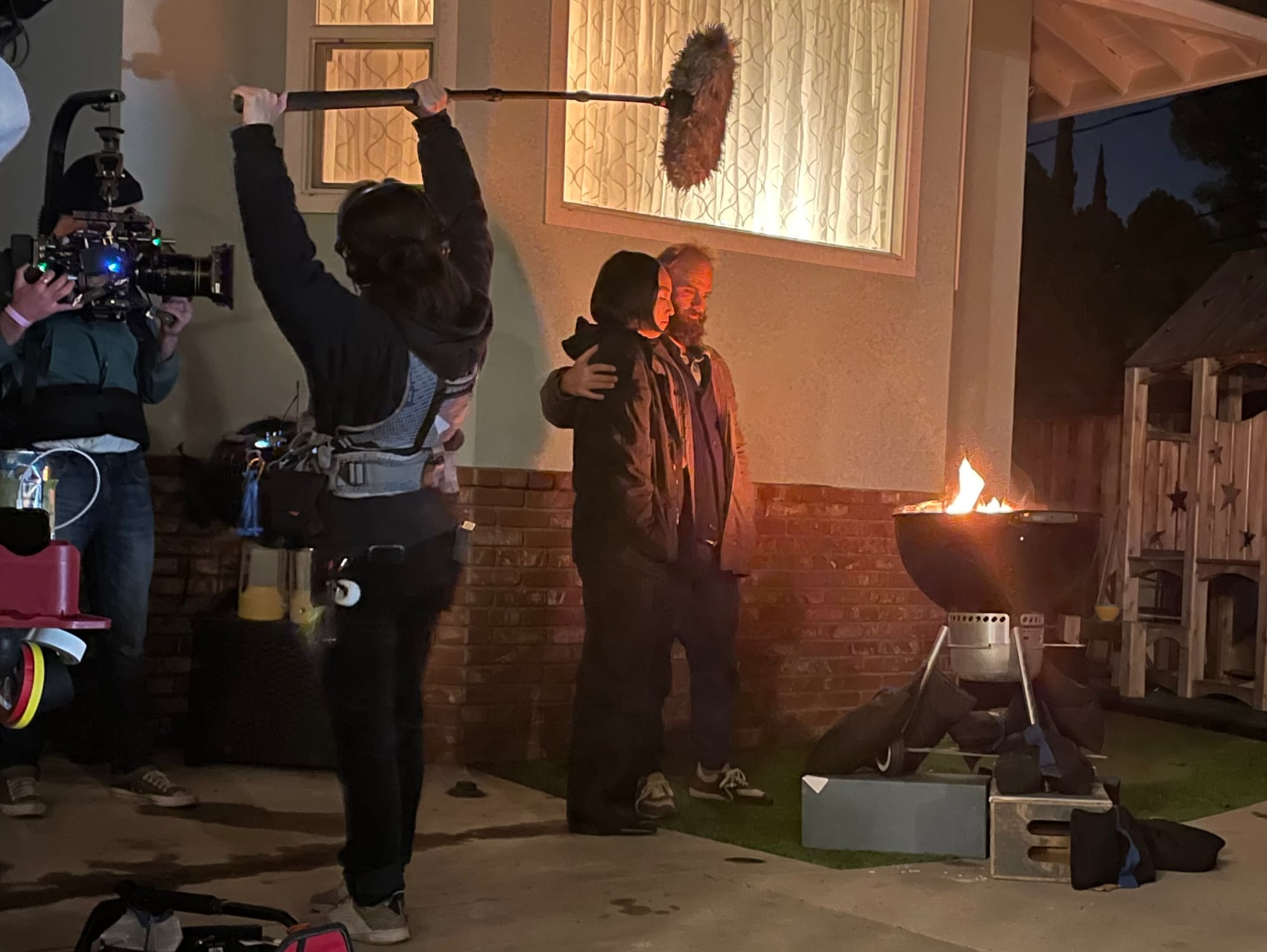

Cinematographer Robert Nachman and I also focused on bringing a lot of warmth to the lighting design. A lot of blues and browns on display, which is reflected in Allison Choi Braun’s costume design as well. Even when the family is having a very uncomfortable dinner in silence at one point, there is a roaring fire in the fireplace behind them that is generating some warmth on screen. This oddly placed fireplace just happens to be a quirk of our house, so we took advantage. There is also a bit of whimsy, highlighted by the very specifically timed pop of Christmas lights in the background, as Jane and Teddy formalize their plans.
Your sound design reflects that mix of genres with jarring electric sounds alongside orchestral crescendos and takes us through the whole film hitting those emotional beats.
Composer Ariel Marx is a genius is the short answer. I was greatly inspired by P.T. Anderson’s Punch-Drunk Love and Jon Brion’s score for that movie. It ties many of the film’s seemingly incongruous genres together in a brilliant way. In particular, Jon Brion wrote a waltz that serves as the romantic theme in that movie. My composer Ariel Marx did the same in writing a waltz for our romantic sequence in which Jane and Teddy come together to solve their big problem. It had to feel like Jane and Teddy were sort of floating off away together in a big, sweeping, romantic way – Ariel just nailed it.
As for the earlier electronic beats, all I knew for sure was that I wanted some sort of rhythmic chaos to be playing while Jane and Teddy were at odds with each other. I gave Ariel a playlist that included a Maurice Ravel piano concerto, a Nicolas Jaar track, some of Cristobal Tapia de Veer’s score from the first season of the White Lotus, and Jon Brion’s Punch-Drunk Love score. I honestly have no idea if Ariel listened to it, but she sent back her score and it was better than anything I could’ve possibly imagined. Those early beats, when Jane and Teddy are at odds, had a heaviness mixed with piercing electronic sounds that are somewhat unpleasant to hear. It just absolutely nails the unpleasantness of their marriage. In the same way Jon Brion’s score did for Punch-Drunk Love, Ariel’s score is the magic that ties together all seemingly incongruous genres of The Breakthrough.
Are you still working towards making a feature length version of this story?
Turning The Breakthrough into a feature length film is my number one priority right now. I have written a script and it is amazing. Hopefully, other people share my opinion.


